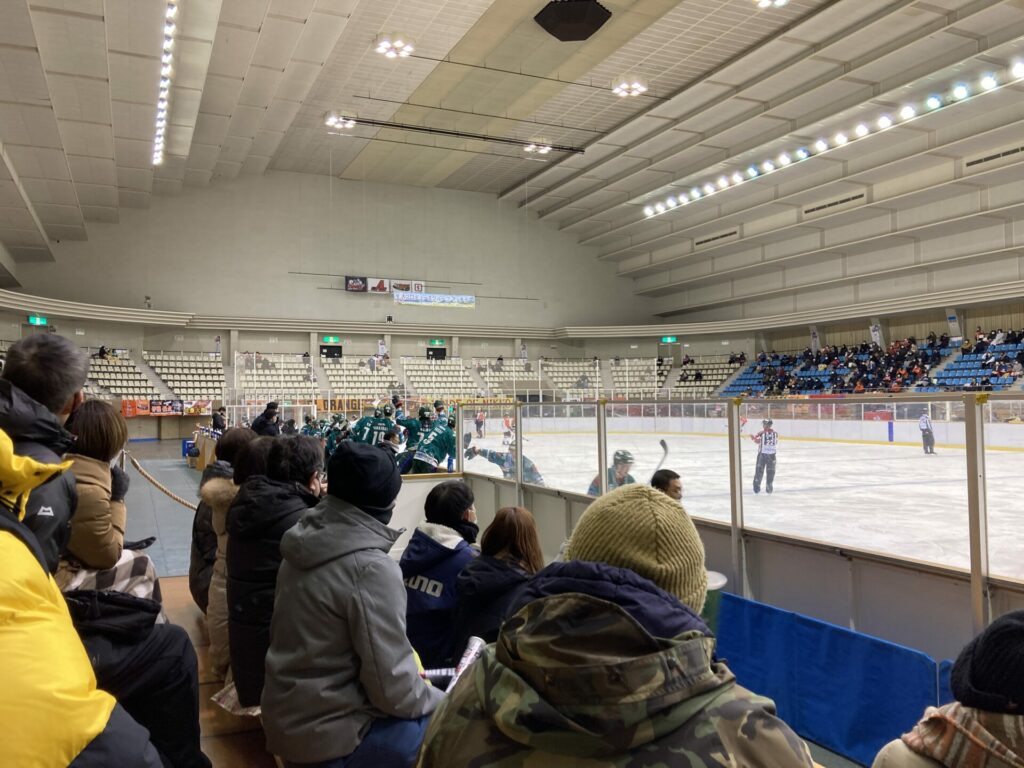The disappointment of speed, and the absence of Jason
Last week, I attended my first professional ice hockey match here in Hokkaido, the unofficial home of the sport in Japan. Honestly? It was awesome. The speed was breathtaking, although I must confess, I still have absolutely zero idea what the rules are. The pace was so quick I could barely register what was happening, which, for an analyst like me, is deeply frustrating.
But my biggest disappointment was the goalkeepers. Did you know they no longer wear the iconic, blank hockey mask made famous by Jason in the Friday the 13th series? The modern mask is complex and expressive, not the simple, terrifying void of the past.
The absence of that blank slate made me think of Japanese Noh masks (Nō-men). Both are unsettling, but for different, yet subtly related, reasons. Jason’s mask scares us by its total absence of expression—a terrifying, emotionless blankness. The Noh mask, however, scares us by its changing expression, which subtly shifts depending on the viewing angle. Yet, in both cases, we are projecting our worst fears onto them. The imagination is always the most effective special effect.

The physics of the creepy face: Asymmetry and the 600-Year mask
To truly understand the Noh mask, you must understand the art of Noh itself—a traditional Japanese play established in the 14th century, mostly focused on the emotional turmoil of human interaction with the unworldly (like ghosts and demons). The masks are for these unworldly roles.
The genius of the Noh mask is that the actor doesn’t change masks; they express a wide range of human emotions (sorrow, anger, longing) simply by changing the angle at which the mask is held. Tilt it down, and it looks sad; lift it up, and it appears angry.
How is this possible? I was fascinated to learn the secret: The masks are subtly carved to be left-right asymmetric. Just like an ordinary human face (which is rarely perfectly symmetrical), this intentional, slight imbalance is what allows the light and shadows to play across the surface, giving the illusion of shifting expressions. This is what we call Nō-men no hyōjō (the expression of the Noh mask).
The woodworking skill required is profound. Authentic Noh masks are still made by professional craftspeople who study and copy masterpieces, some of which are over 600 years old. This is where the spiritual element of high-skill woodworking is forged in Japan. It is the perfect marriage of craft, psychology, and subtle asymmetry—a lesson that undoubtedly filters down into our own wooden furniture industry, where seemingly simple forms often hide immense, subtle complexity.
Hokkaido: A kingdom of ice, but not Noh
Unfortunately, while Hokkaido is the undisputed kingdom of ski and skate in Japan, we don’t have much of a Noh tradition. We are a young, frontier region, developed only about 150 years ago, and we lack the authentic stages and artists.
But that’s fine. We have plenty of ice. You can skate everywhere, sometimes even in front of the central station here in Asahikawa. We may lack the historical gravitas of a 600-year-old wooden mask, but we are absolutely masters of the fleeting, crystalline beauty of ice. We excel at the beauty of the temporary and the fleeting, not the beauty of the six-century legacy. And that, too, is a powerful form of cultural expression.


Shungo Ijima
He is travelling around the world. His passion is to explain Japan to the world, from the unique viewpoint accumulated through his career: overseas posting, MBA holder, former official of the Ministry of Finance.

